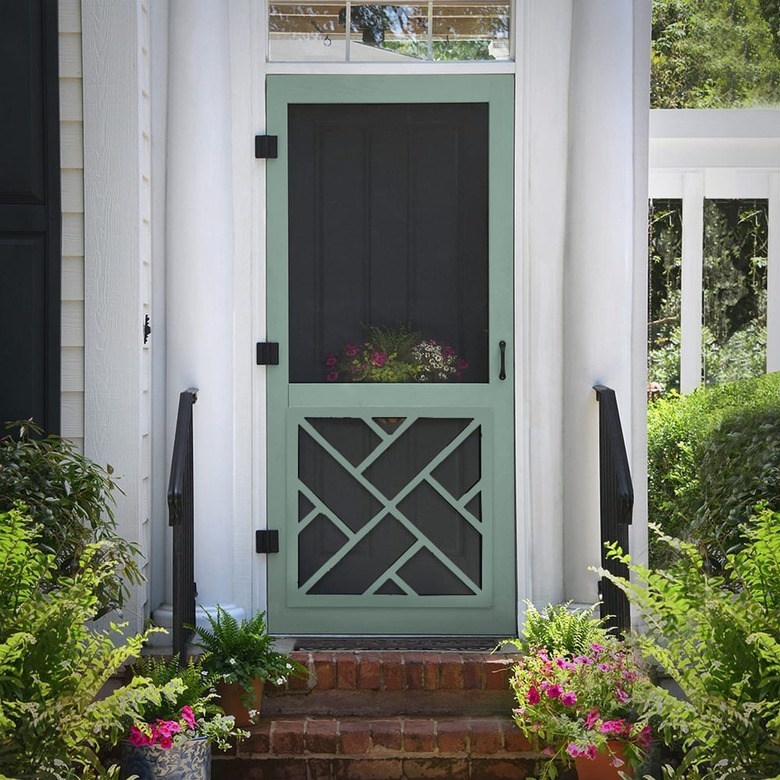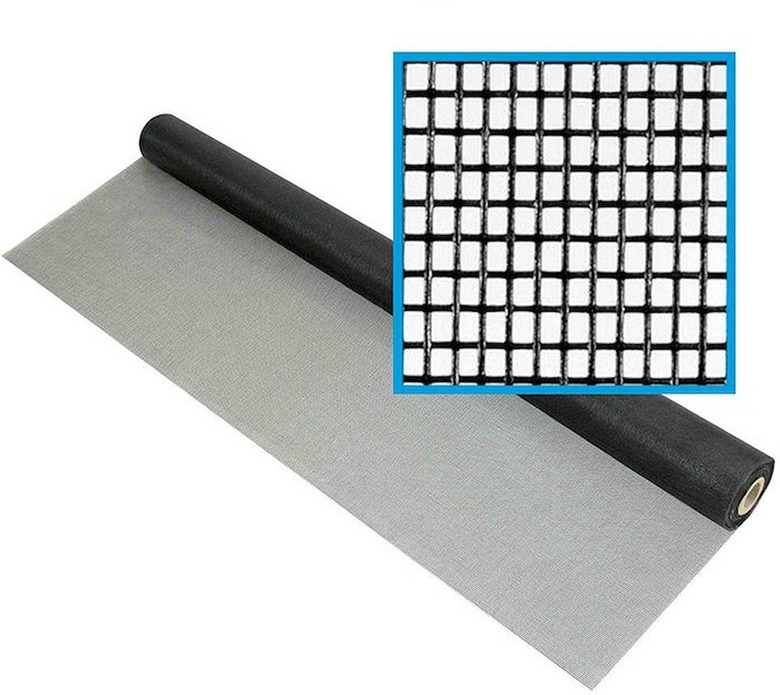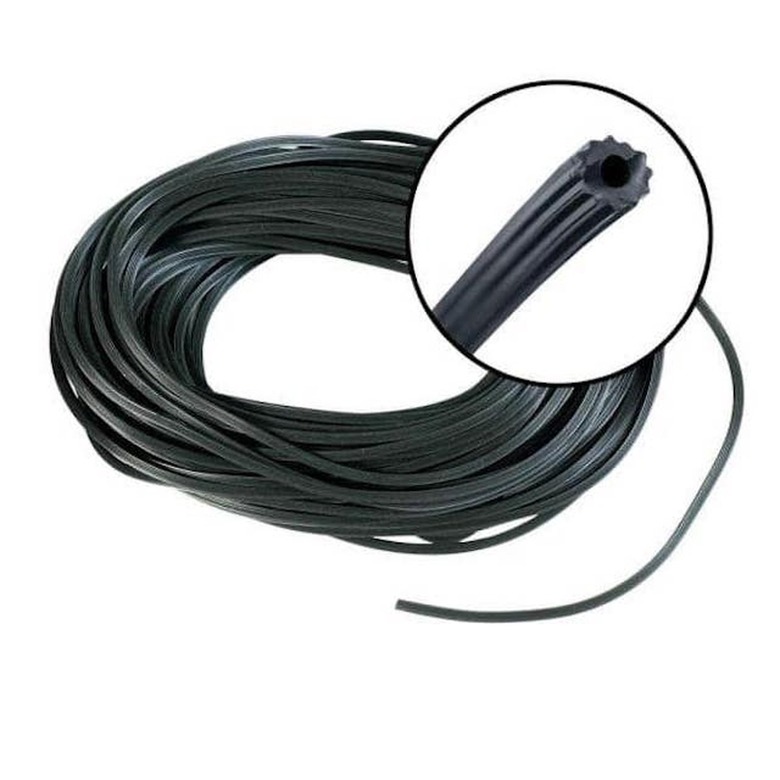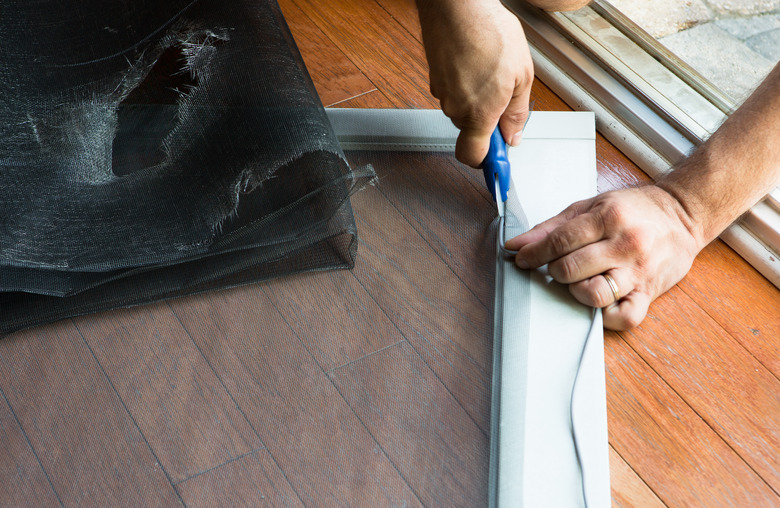How To Repair A Screen Door
We may receive a commission on purchases made from links.
In the hot summer months when you leave your back door, front door, or patio door open to circulate fresh air in the house, a screen door may be all that stands between you and hoards of hungry mosquitoes. It can't protect you if the screen is torn or damaged, and if you have pets or small children, that's an all-too-likely scenario. Fortunately, removing the old screen and installing a new screen on a swinging or sliding door is one of the most DIY-friendly home improvement projects there is, and replacing the screen on a retractable screen door is even easier.
Of course, your screen door won't keep out pests if the door itself doesn't seal properly against the door frame, and fixing that is usually a matter of tightening or replacing hinges and realigning the door lock. In rare instances, you may need to purchase replacement parts, but it's more likely that you can make your existing door hardware work. You probably won't need to worry about this because a damaged screen is the most common reason for a screen door repair.
Even if your screen isn't damaged, you may want to replace it with a heavier screen anyway. A heavier screen mesh can filter out sunlight, which keeps your house cooler, and it's more resistant to pet damage. You only need a few simple tools for this job, and it shouldn't take more than an hour, even if you've never done it before.
Shopping for a New Screen
Shopping for a New Screen
Manufacturers gauge screen transparency by the number of mesh openings per inch, and they measure in two directions: from side to side and from top to bottom. The conventional screen mesh is 18 x 16, which means there are 18 mesh openings per inch from side to side and 16 from top to bottom. A 20 x 20 mesh has smaller openings that keep out no-see-ums and other small insects, while a larger 18 x 14 mesh is appropriate for pool areas that need more ventilation.
The two main screen mesh materials are aluminum and fiberglass, although if you want a more stylish look and you aren't on a budget, you can also opt for copper or bronze. Screening made from aluminum and other metals tends to be more durable than fiberglass, but it's also more expensive and slightly more difficult to install, so most people choose fiberglass screen.
The thickness of the mesh material, or mesh diameter, is another factor to consider when shopping. The diameter of a standard 18 x 16 fiberglass or aluminum screen is 0.011 inch, while that of a more heavy-duty one is 0.013 inch. A good solar screen that can block 90 percent of incident light, on the other hand, can have a diameter between 0.020 and 0.025 inch.
You May Need New Spline
You May Need New Spline
Screen spline is a flexible vinyl cord you push into the groove around the screen opening to hold the screen in place. If you're replacing your current screen with screen of the same mesh and diameter, you can often reuse the existing spline, but if you install heavier screen or your existing spline is brittle or otherwise damaged, you may need to purchase new spline.
Spline comes in 20- to 100-foot rolls in diameters from 0.125 to 0.250 inch (1/8 to 1/4 inch). When you rescreen, the best way to size the spline you need is to measure the diameter of your existing spline using a tape measure. Failing that, you can measure the width of the groove into which it fits. The spline you purchase should be slightly larger in diameter than the groove to ensure it locks in place, but you may want a slightly smaller diameter when installing a heavy-mesh screen that takes up a lot of room.
Things Needed
How to Fix Your Screen Door
How to Fix Your Screen Door
You don't need many tools to rescreen a door or install a window screen, but a spline roller is essential. This is the tool you use to push the screen into the groove and to install the spline. You also need to purchase screen wide enough to span the screen opening with some overlap on both sides, so be sure to measure the door width before you go to the hardware store to buy the screen.
1. Take Down the Door and Lay It Flat
If the door has a pneumatic or spring closer, unscrew it from the door using a Phillips screwdriver. You can leave the other end's door closer attached to the door frame. Unscrew the hinges from the door and then remove the door and lay it on a flat surface with the screen side facing up. If you're replacing the screen on a sliding screen door, lift the door and angle the bottom toward you to remove it from its track frame.
2. Remove the Old Spline and Screen
Locate the end of the spline, which is usually in a corner, and work a flat-head screwdriver under it to force it out of the groove. Grasp the end with your fingers or with pliers, pull gently, and continue pulling to remove all the spline from that side of the door. Repeat for the other three sides. When all the spline is removed, you should be able to lift out the old screen. Clean out debris from the groove using a putty knife.
3. Prepare the New Screen
Unroll enough screen from a roll to cover the screen opening, allowing an overlap of at least 2 inches on all sides. Cut the screen from the roll using a utility knife. A knife works for both fiberglass and metal screening.
4. Press the Screen Into the Groove
Lay the screen flat so it is centered over the door frame. Use a splining tool to press the screen into the groove and make a depression. A splining tool has two rollers, one on either end. Use the roller that tapers to a sharp edge for this step. You'll use the other roller (with a grooved edge) when installing the spline. Be careful not to press too hard with fiberglass screen, as the roller can cut through it.
5. Install the Spline
Force one end of the spline into one end of a groove using the roller on the spline tool that has the grooved edge. Run the roller along the groove, forcing in the spline as you go until you reach the other end. Sometimes, it helps to pull the spline gently to contract it as you roll. It will expand to its normal size when it's in the groove and will hold the screen more securely. Trim the end of the spline with a knife and then repeat with the other three sides.
6. Trim the Screen
Run a utility knife along the outer edge of the spline and as close to it as possible to cut off the excess screen.
7. Rehang the Door
Before hanging the door back on its hinges, check the hinge screws to make sure they are tight. If the door has been leaning and not closing properly, the most common cause is loose hinge screws. If you can't tighten one or more screws, replace them with longer ones. Sometimes, installing shims helps door hinges work better.
Set the door back in the frame, supporting it on a piece of wood if necessary, and drive the hinge screws into the door. Then, reattach the door closer. If you're replacing a sliding door, angle the top of the door into the frame, lift the door far enough for the bottom to clear the bottom track, and lower the door onto the track.
Replacing a Retractable Screen Door
Replacing a Retractable Screen Door
A retractable patio screen door rolls onto a spring-loaded roller much like a window shade, and if the screen is damaged, you can replace it, roller and all. Remove the roller cover and push the roller to one side to release it from the bracket and then pull it out. Install the new roller by inserting one end in the bracket and pushing it toward that bracket to allow the other end to clear the other bracket. Once the roller is installed, replace the cover, and you're finished.



